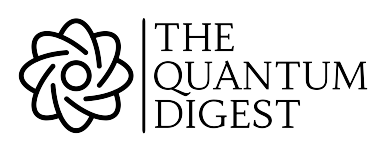Introduction to Quantum Algorithms: Navigating the Quantum Realm with Qiskit
In the dynamic world of quantum computing, the concept of quantum algorithms stands as a cornerstone. These algorithms, leveraging the principles of superposition and entanglement, promise to revolutionize various fields, with Qiskit acting as a pivotal tool in their exploration and implementation.
Unlocking the Potential of Quantum Algorithms
At their core, quantum algorithms operate on qubits, the fundamental units of quantum information. Unlike classical bits, qubits can exist in multiple states simultaneously, enabling the execution of complex computations at unprecedented speeds. It’s here that Qiskit, IBM’s open-source quantum computing software development framework, comes into play, offering a platform for the development and testing of quantum algorithms. Through Qiskit, quantum enthusiasts and professionals alike can delve into the intricacies of quantum algorithms, exploring their vast potential and diverse applications.
Qiskit: A Gateway to Quantum Exploration
Qiskit serves as a gateway to the world of quantum algorithms, providing a comprehensive set of tools and libraries for quantum development. For instance, Shor’s algorithm, famed for its ability to factor large numbers exponentially faster than the best-known classical algorithms, can be implemented and tested using Qiskit’s user-friendly interface and robust backend. Grover’s algorithm, another exemplary quantum algorithm designed for searching unsorted databases and solving black-box computational problems, can also be explored in-depth through Qiskit, allowing users to gain insights into its working principles and applications.
The versatility of Qiskit extends beyond these well-known algorithms, enabling the exploration of a plethora of other quantum algorithms. For example, Variational Quantum Eigensolver (VQE), a hybrid quantum-classical algorithm used for solving eigenvalue problems and exploring quantum chemistry applications, can be efficiently implemented using Qiskit’s extensive libraries and resources. This allows for practical experimentation and a deeper understanding of the algorithm’s structure and functionality.
Real-World Applications and Future Prospects
The application of quantum algorithms, facilitated by Qiskit, spans various domains including cryptography, optimization, simulation, and machine learning. In the realm of cryptography, Qiskit enables the exploration of quantum key distribution (QKD) algorithms, ensuring secure communication by leveraging the unique properties of quantum states. In optimization and simulation, quantum algorithms implemented through Qiskit offer solutions to complex problems, enabling advancements in fields such as logistics, finance, and drug discovery.
Furthermore, the intersection of quantum computing and machine learning, often referred to as quantum machine learning (QML), holds immense promise. Qiskit provides the necessary tools and libraries for developing and testing QML algorithms, paving the way for groundbreaking developments in data analysis, pattern recognition, and artificial intelligence.
Click here to learn more about real-world applications.
From Theory to Application with Qiskit
Quantum computing, often shrouded in layers of mystique, is increasingly accessible thanks to platforms like Qiskit. An open-source quantum computing software, Qiskit empowers users to delve deep into the world of quantum algorithms. Whether you’re new to quantum programming or an experienced quantum researcher, implementing algorithms using Qiskit can be a transformative experience. In this article, we’ll explore practical examples of how Qiskit breathes life into the theoretical constructs of quantum computing.
1. Quantum Teleportation with Qiskit

One of the most fascinating phenomena in quantum mechanics is teleportation. Not in the science fiction sense, but the real, verifiable, quantum teleportation. Qiskit makes it simpler for enthusiasts to test and understand this concept.
To begin, ensure you have Qiskit installed and set up. Create a quantum circuit with three qubits and three classical bits. The algorithm focuses on transferring the state of one qubit to another, using a shared entangled state. Once the circuit operations are in place, the algorithm uses Qiskit’s inbuilt simulators to validate the teleportation process. Observing the results showcases how the information is transported between qubits without a direct physical transfer.
2. Grover’s Algorithm – Quantum Search Enhanced
Grover’s Algorithm, known for its search capabilities, offers a faster alternative to classical methods. Implementing it via Qiskit provides insights into its efficiency. Grover’s stands out due to its quadratic speed-up compared to classical search algorithms.
To implement this in Qiskit, define an oracle that marks the desired search term in the quantum superposition. The primary step is to initialize your qubits in a superposition using Hadamard gates. After multiple iterations (usually square root of the database size), and applying Grover’s diffusion operator, you’ll notice that the quantum state gradually transforms. By the end, the desired search term becomes the most likely observation. Qiskit’s visualization tools can help you observe the evolution of the quantum states through each iteration.
3. Quantum Fourier Transform (QFT) Realized with Qiskit
The Quantum Fourier Transform (QFT) serves as a cornerstone for many quantum algorithms. Qiskit’s platform offers a straightforward approach to experimenting with QFT and discerns its potential advantages over the classical Fourier Transform.
Utilize Qiskit to create a quantum circuit tailored for QFT. For n qubits, the primary goal is to transform each qubit to express phases that represent the binary fractions of the desired quantum state. The meticulous gate operations in Qiskit, such as controlled rotations, aid in building the QFT circuit. Once implemented, the transformation can be easily visualized and compared to classical methods. The results underline the power and efficiency that quantum transformations can offer, especially as the size of data increases.
Delving into Quantum Algorithms: Shor’s and Grover’s Wonders
In the quantum computing realm, Shor’s and Grover’s algorithms stand out for their revolutionary potential. Using Qiskit, we gain access to a platform that allows us to implement and explore these algorithms in depth.
Shor’s Algorithm: Factoring Large Numbers
Shor’s algorithm is renowned for its ability to factor large numbers efficiently. This quantum algorithm exponentially outperforms its classical counterparts, posing potential risks to current cryptographic techniques. The actual equation for Shor’s algorithm is:
$$ N = \frac{\pi}{4} \sqrt{N} $$
Here, N is the number to be factored, and p and q are its prime factors. In Qiskit, the implementation of Shor’s algorithm can be carried out as follows:
from qiskit.aqua.algorithms import Shor
from qiskit.aqua import QuantumInstance
import Aer
# Define the number to be factored
N = 15
# Initialize Shor's algorithm
shor = Shor(N)
# Run the algorithm
backend = Aer.get_backend('qasm_simulator')
quantum_instance = QuantumInstance(backend, shots=1024)
result = shor.run(quantum_instance)
# Print the result
print("The factors of", N, "are", result['factors'])
Delving into Qiskit reveals the beauty and efficiency of implementing Shor’s algorithm, giving us an edge in understanding quantum computational applications. Shor’s algorithm, with its factoring prowess, opens doors to a myriad of possibilities in the realm of cryptography, signaling a paradigm shift.
Grover’s Algorithm: Searching Unstructured Databases
Grover’s algorithm, another quantum marvel, is celebrated for its capability to search unstructured databases quadratically faster than classical algorithms. The equation representing the number of iterations, N, required by Grover’s algorithm is:
$$ N = \frac{\pi}{4} \sqrt{N} $$
In this equation, N represents the number of elements in the database. Implementing Grover’s algorithm using Qiskit is an enlightening experience, enabling insights into its search capabilities. Below is a snippet showcasing how to use Qiskit to implement Grover’s algorithm:
from qiskit import Aer
from qiskit.aqua import QuantumInstance
from qiskit.aqua.algorithms import Grover
from qiskit.aqua.components.oracles import LogicalExpressionOracle
# Define the Oracle for the search problem
oracle = LogicalExpressionOracle('(w ^ x) & ~(y ^ z)')
# Initialize Grover's algorithm
grover = Grover(oracle)
# Run the algorithm
backend = Aer.get_backend('qasm_simulator')
quantum_instance = QuantumInstance(backend, shots=1024)
result = grover.run(quantum_instance)
# Print the result
print("The Grover Algorithm solution is", result['top_measurement'])
Click here to learn more about quantum algorithms.
Fostering Efficient Quantum Algorithms with Qiskit

In the fast-paced quantum computing landscape, this library emerges as a powerful tool, playing a pivotal role in enhancing algorithm efficiency and performance. With its customizable features and user-friendly interface, this provides a conducive environment for researchers and developers alike. Here, we delve into strategies to optimize quantum algorithms, focusing on practical techniques that leverage the unique capabilities of Qiskit.
Optimization Techniques in Qiskit
Qiskit offers an extensive array of optimization techniques tailored to suit various quantum computing needs. These techniques are instrumental in refining quantum algorithms, ensuring they run efficiently on quantum hardware. One such technique is the Variational Quantum Eigensolver (VQE), a hybrid quantum-classical algorithm. Utilizing Qiskit’s VQE allows for the approximation of the ground state energy of a given Hamiltonian, which is crucial for solving many-body quantum systems. Implementing these optimization techniques is paramount, as they significantly reduce the required quantum resources, making algorithms more feasible and efficient.
Quantum circuit optimization in Qiskit is another essential area of focus. The software provides tools that enable the simplification and reduction of quantum gate operations. This process not only streamlines quantum algorithms but also mitigates the impact of quantum noise, a notable challenge in quantum computing. By strategically using Qiskit’s optimization tools, developers can effectively enhance the performance and reliability of quantum algorithms.
Leveraging Parallelism and Error Mitigation
Parallelism is a core component of algorithm optimization in Qiskit. It entails running multiple quantum circuits simultaneously, which significantly accelerates computation times. This library facilitates parallelism by providing the necessary tools and frameworks, making it accessible even to those new to quantum programming. In leveraging parallelism, researchers can harness the full computational power of quantum processors, thereby optimizing algorithm performance.
Error mitigation is another pivotal aspect that this tool addresses proficiently. In quantum computing, errors are inevitable due to the inherently delicate nature of quantum states. The library offers advanced error mitigation techniques, helping developers identify and correct errors, and enhancing the overall reliability of quantum algorithms. Incorporating these techniques is vital, as it ensures the accuracy and integrity of the results obtained from quantum computations.
Adaptive Algorithms and Resource Management
Adaptive algorithms in Qiskit are designed to adjust dynamically based on the data they process. These algorithms are particularly beneficial as they optimize resource utilization, leading to more efficient quantum computations. By employing adaptive algorithms, developers can ensure that quantum resources are allocated judiciously, thus optimizing both efficiency and performance.
Resource management is a critical consideration in quantum computing. Efficient use of available quantum resources ensures that algorithms run smoothly and effectively. This tool excels in providing tools for effective resource management, enabling developers to maximize the use of quantum hardware. By optimizing resource allocation, Qiskit aids in reducing computation times and improving the overall performance of quantum algorithms.



